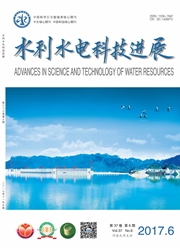

 中文摘要:
中文摘要:
针对土工织物淤堵试验过程中形成的渗透系数k与时间t的“驼峰”形关系曲线,通过传统短筒土柱模型和改进长筒土柱模型试验,分别探讨了“驼峰”现象产生的原因、主次影响因素及其敏感性。试验结果表明:试验初始阶段产生的“驼峰”现象是土样细颗粒在水压作用下的不规则移动所致,且细颗粒移动量以试验土样两端为主;“驼峰”峰值及出现时间和持续时间主要受水头、干密度和土样颗粒级配等因素影响,其中水头为最显著的影响因素。
 英文摘要:
英文摘要:
With regard to the hump-type curve of the permeability coefficient k and time t generated in the clogging tests on geotextile, the causes, the primary and secondary factors and their sensitivities were investigated by means of the common soil column model and the modified long cylinder model. The results show that the hump phenomenon generated at the initial phase of the tests is caused by the irregular motion of the soil particles under the water pressure. The motion quantity of the fine soil particles mainly occurs at both ends of the samples. The magnitude, occurrence and duration of the hump peak are influenced by the water head, dry density and particle size distribution of soils, among which, the water head is the most significant factor.
 同期刊论文项目
同期刊论文项目
 同项目期刊论文
同项目期刊论文
 期刊信息
期刊信息
